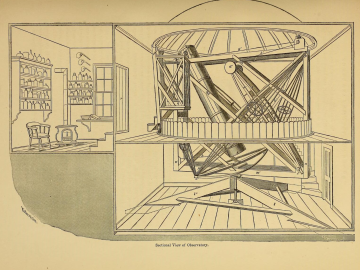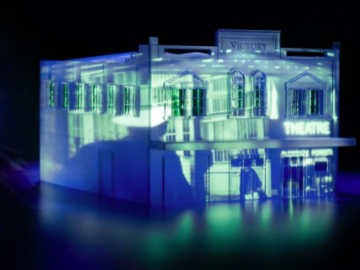Review of ‘The Smallest Lights in the Universe'
Melanie Myers
‘Not every planet has a star. Some aren’t part of a solar system. They are alone. We call them rogue planets.’ Sara Seager is not speaking metaphorically, at least not entirely, with this opening to her memoir The Smallest Lights in the Universe. As the next paragraph explains, rogue planets – like PSO J318.5-22 that ‘lurch[es] across our galaxy like a rudderless ship’ – are ‘real places on our celestial maps’. A detailed explanation of rogue planets – ‘where it rains liquid metal in the dark’ – is an unusual way to begin a memoir that is ostensibly about grief, resilience, and finding new love and hope, after losing a husband to a rare stomach cancer, but this is no usual memoir.
Seager’s fascination with the stars began with a camping trip to Ontario when was ten. She wandered out of her tent one night ‘just far enough away to clear the last of the tree’ and looked up. She still remembers ‘that feeling in [her] chest’ and being ‘overwhelmed by what felt like too much light, too much knowledge to take in all at once’. At 16, she attended at presentation at the University of Toronto on the Supernova 1987A and found herself ‘enthralled’. She took a summer job operating a carnival ride and soon saved up $400 to buy a four-inch reflecting telescope. In her final years of high school, she knew she wanted to be an astronomer and not even her beloved father, who insisted she become a doctor, could dissuade her from this course. Sara Seager is now an astrophysicist and professor of physics and planetary science at the Massachusetts Institute of Technology (MIT) whose specialty is researching exoplanets – ‘the smallest lights in the universe’. Professionally, she is consumed by the desire to find Earth-like exoplanets that may harbour life by way of detecting atmospheres that have biosignature gases. In 2012, at the age of 42, she became a MacArthur Fellow – a certified ‘genius’ – and she is member of the National Academy of Sciences, among other awards and honours. Seager’s research team conceived the ambitious Starshade project, currently in development with NASA. The project aims to launch a sunflower-shaped screen into space, which, when positioned relative to a space-based telescope pointed at a star, will block out the immense amount of starlight that currently makes it impossible to detect smaller, earth-like exoplanets. She is currently the Deputy Science Director for the MIT-led NASA mission TESS (Transiting Exoplanet Survey Satellite).
These achievements and accolades are remarkable for anyone, but in the the male-dominated field of astronomy, they are even more impressive. As Seager points out, women in science ‘often have to work harder than their male counterparts, especially to earn and keep positions of leadership’ and that ‘they are suspected of being too emotional for such cool, clinical work’. For this reason, Seager has always kept her emotions in check at work, aware she would receive far more judgement than her male colleagues for any outbursts of feeling. With a professional and public persona built on her reputation as an astrophysicist with an almost unparalleled intellect for maths and physics – one where emotion plays no part – Seager’s vulnerability and honesty about the depth of her grief, and inability to cope as parent of two young sons, are the most striking features of her memoir.
To ‘counter’ the ‘catastrophic loss’ of losing her husband, Seager channels her search for meaning into her work – that is, finding other Earth-like planets that are capable of supporting life. Of what studying the stars means to her – why she is so singularly focused in her pursuit to know more – she writes: ‘Maybe because stars are the antithesis of darkness. ... Stars are light. Stars are possibility. They are also places where science and magic meet, windows to worlds greater than my own. Stars give me the hope that I might one day find the right answers.’
This explains why, for all her personal hardship, from a difficult childhood that included an abusive stepfather through to losing her husband to cancer, the book is imbued throughout with a sense of wonder and intense curiosity. Seager received a diagnosis of autism in her forties after a friend read a profile on Seager in The New York Times Magazine and showed it to his wife, an autism specialist: ‘She thinks you have autism,’ her friend wrote, adding, ‘I’ve never met anyone who can focus like you.’ Seager told him he was wrong: ‘No one had ever suggested that I was anything other than quirky as a child, strange a an adult.’ Nevertheless, she went to a specialist who confirmed the diagnosis. Seager says she saw herself ‘clearly for the first time’ and that so much of her life ‘suddenly made sense’. Her austism not only explains her ferocious single-mindedness and focus but comes through in the writing. Her voice on the page is direct, unflinching, and assured – you get the sense she doesn’t suffer fools easily and views social pleasantries that grease everyday exchanges as a waste of time – hough it is not without warmth. Seager doesn’t seek out sympathy, but she does compel understanding, of herself, her choices, what drives her, and what she’s trying to achieve as astrophysicist.
The Smallest Lights deftly plaits Seager’s life work as an astrophysicist and the mind-bending science of exo-planet research with the life of the flesh-and-blood woman behind that work. The book is sweeping and ambitious in the way it moves from the intensely personal to the limits of the known universe – scales, quantities (of galaxies, stars and planets) and distances that are incomprehensible in their magnitude, yet it reminds us, time and again, that it’s personal relationships that matters most – the people who expand our universe.
The Smallest Lights in the Universe: a Memoir Sara Seager (2020) Fourth Estate, NY


